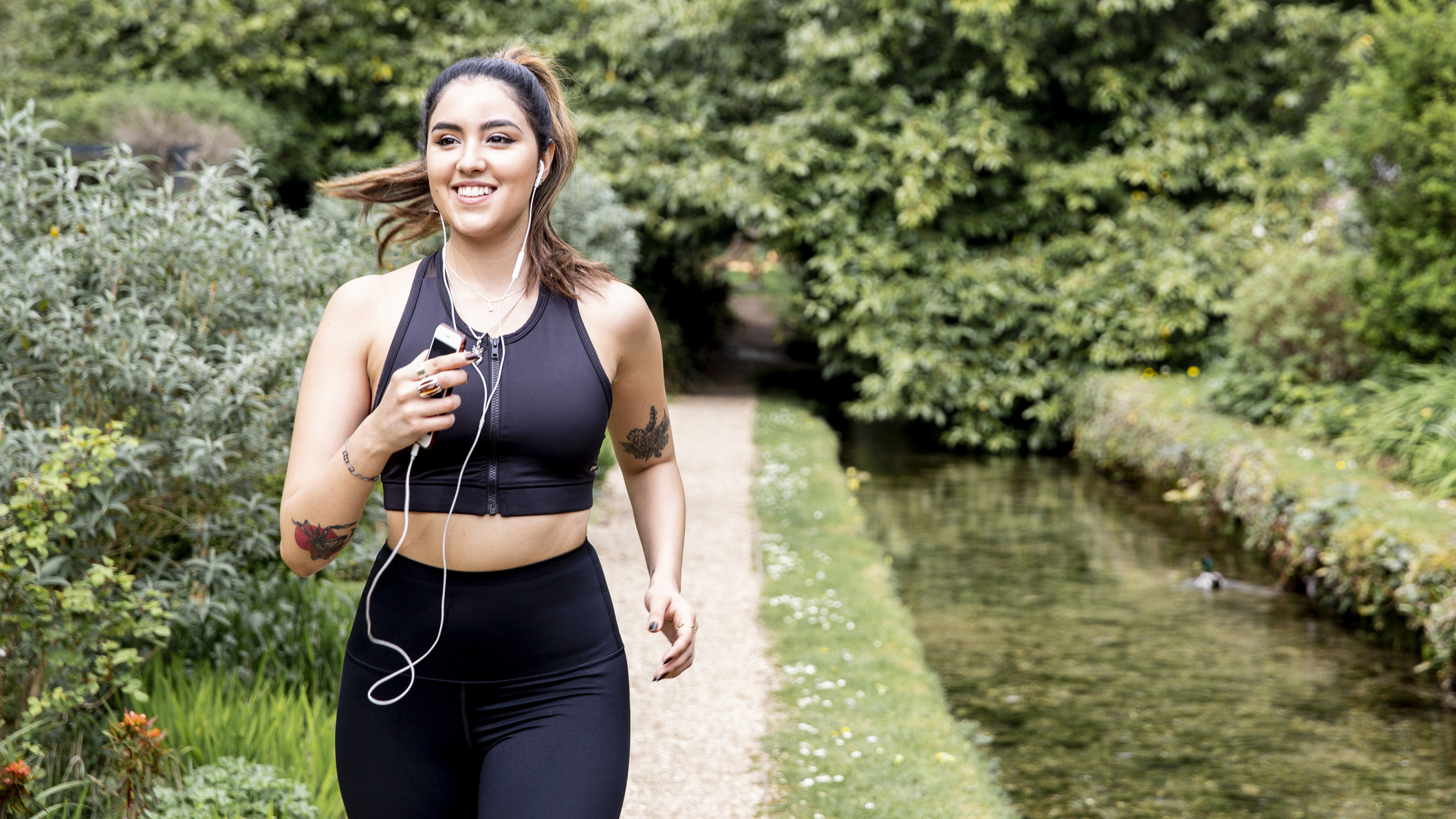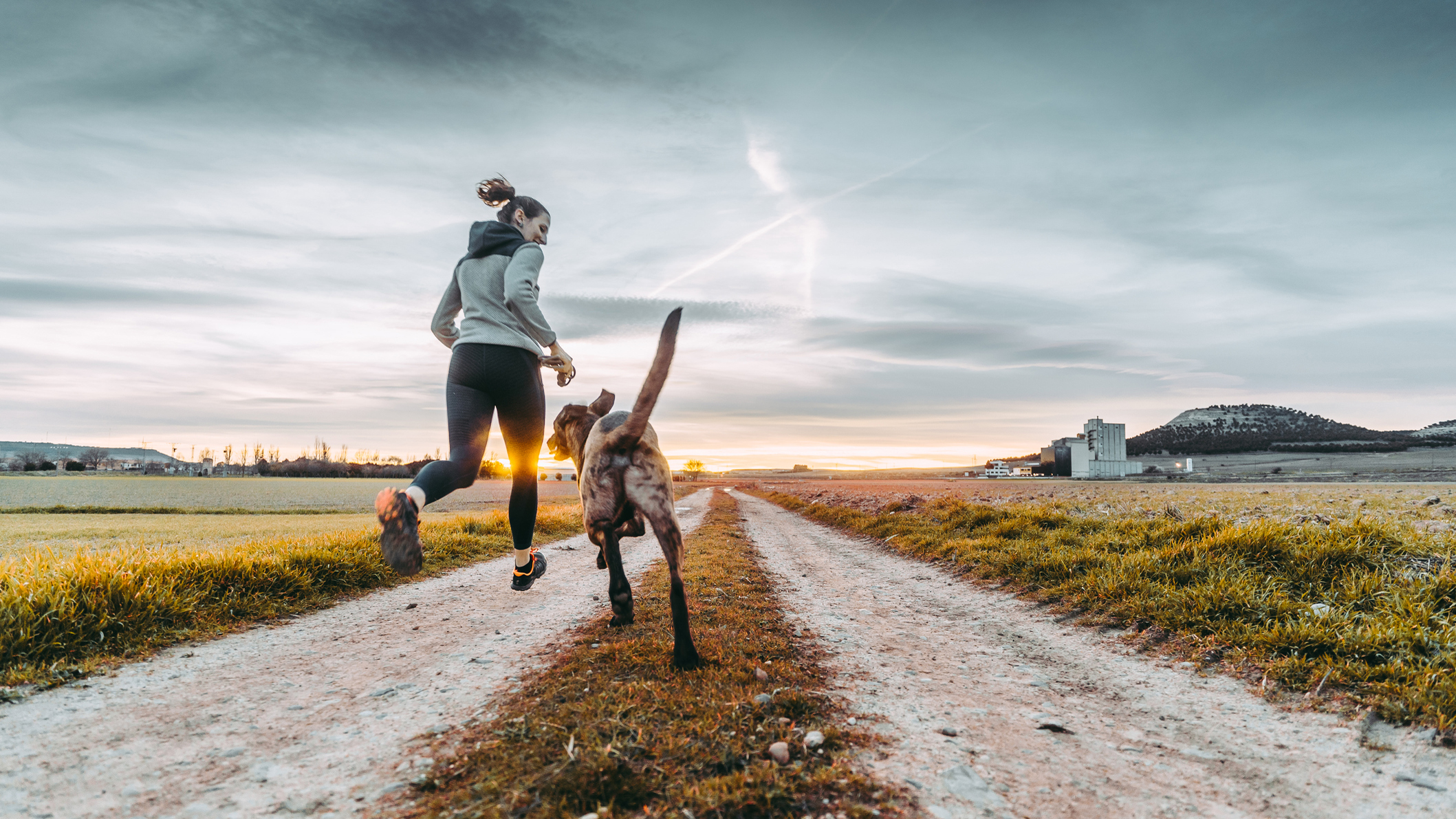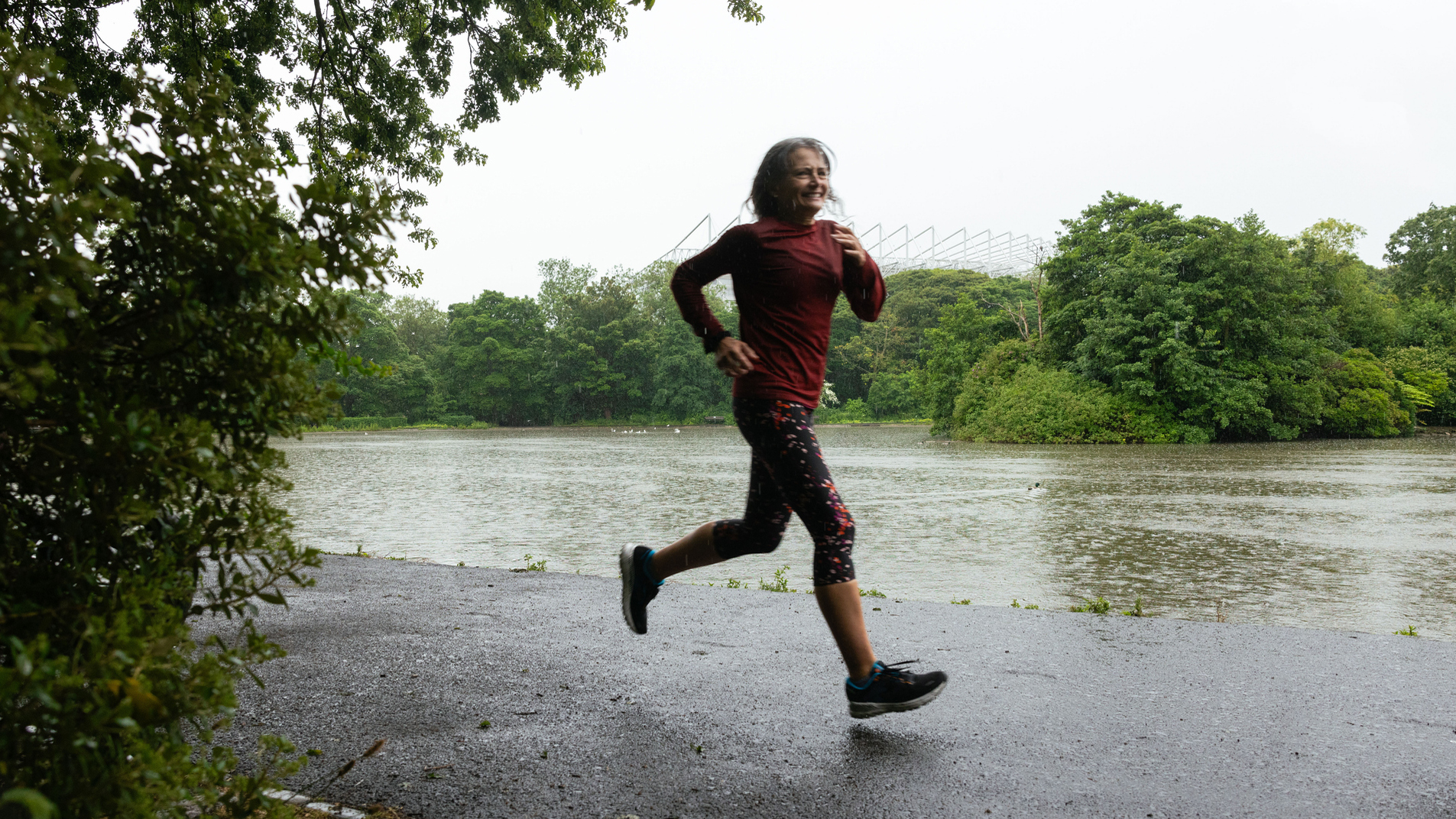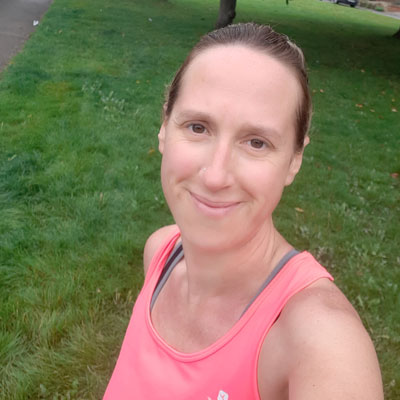This is what happened when I ran a "grateful mile" every day for three weeks
Practicing gratitude during runs and dog walks has drastically changed my outlook


I'll never forget the time a friend invited me to a Buddhist meditation session. I was lured by the promise of tasty vegetarian food beforehand and thought it would be interesting to try something different.
The food was great, but the meditation was not. We sat on uncomfortable chairs for 30 minutes, in a cold room, with our eyes closed. I was bored and didn't see the point. A similar thing happened when I tried to learn how to meditate via an app out of curiosity. It asked me to imagine myself in certain scenarios and to repeat mantras to myself. But none of it was tangible.
So when I heard about the Grateful Mile I was pleased to see the word gratitude replace mindfulness. To me, mindfulness is incredibly vague, but being grateful is something I can immediately relate to real-life experiences.
The philosophy
Run Grateful, founded by former drug addict Mark White, is a mindful movement collective that supports people to make positive changes in their lives. Their philosophy centers on moving forward physically and mentally, connecting with others and our surroundings, and reflecting on our past and present.
I connected with White to learn about how to implement a 21-day Grateful Mile program.
My Grateful Mile plan
Whether you walk or run, the goal is to commit to at least one mile every day. While doing the mile, you take a moment to think of something or someone you are grateful for. Each day you should try to think of something or someone different.
"Dive deeper into the feeling and think about the specifics. If you are grateful for your family, is it for a particular family member or a particular experience you have shared? Who was there, what was said, what was for dinner, what was the weather like, what about this experience are you particularly grateful for?" explains White.
Start your week with achievable workout ideas, health tips and wellbeing advice in your inbox.
Unlike other active self-care practices like mindful walking, the Grateful Mile plan has a structure to it.
In the first week, during at least one session, you should try and notice your surroundings, focusing on what you can see and hear. On another mile in the first week, you should try repeating a positive mantra or affirmation.
In the second week, White encourages you to cover a mile without setting a time, distance, or route. On another day you should try running while breathing through your nose. Throughout all of these sessions, whatever the format, you should focus on thoughts of gratitude.
The third and final week continues with the gratitude focus but with two new suggested themes. The first is to run or walk untracked, without relying on technology to record your time, distance or speed. The second is to vocalize your gratitude by taking the time to message or call someone to let them know you are grateful.
My experience
I walk the dog daily and run five times a week, so I have the physical part of the daily mile covered. But I usually listen to podcasts, do some mental filing, or chat with other dog walkers or runners. I have never taken the time to reflect or think about what I am grateful for.

On my first grateful mile, my mind was flying all over the place and I was listing lots of obvious things: family, friendships, food, warmth, security. But then I remembered White’s words about focusing on one thing and digging into the details.
I also recalled him talking about how gratitude was not only about being thankful but was about returning kindness. And I realized it didn’t have to be about being kind to someone who is directly kind to you. It was simply the idea of paying it forward.
So, I thought about the Ukrainian family we have been supporting during the past two years. We have had four members of the same family live with us for different periods. We have been fortunate enough to have space in our home to accommodate them, been lucky to learn about their culture, been able to set a good example for our children about helping others in need, and we now have a beautiful extended family.
I felt grateful that we have been in a position to help them, and it has been a hugely positive experience. I started thinking about all the meals we have shared, birthdays we have celebrated, and the weird and wonderful foods we have tasted. Before I knew it I had walked more than two miles.
Over the next few weeks, I reflected upon lots of random things. Spontaneous things would pop into my head, and they were never the obvious ones such as, "I’m grateful for my health and I’m grateful for my children." It had a real impact on my outlook on life and I started to think about things differently.
When the dog had his snout down a rabbit hole I thought about how I was grateful that the dog, who was a very difficult puppy, had tested my marriage and we had learned from the pretty horrendous experience and were stronger for it. I shared these thoughts with my husband to let him know I was thankful.

When I was out in a torrential downpour with painful hail hammering down on my head I took the opportunity to stop, listen, look and feel my surroundings. It was amazing to feel the full force of nature and yet feel warm and secure in my waterproof clothing.
When I did a 28-mile loop race I incorporated my grateful mile for the day, and repeated the mantra "just one more loop, just one more loop", which helped me to get around seven loops with a huge smile.
I took pleasure in running without a watch and going off to explore a new footpath without worrying about where it would take me or how long I would be. And I felt grateful that I had the time and confidence to do this.
My results
Practicing mindfulness didn’t appeal to me previously, as I felt that it was too vague a concept. But there has been something powerful about reflecting upon tangible things to be grateful for. It helps to turn a glass-half-empty perspective into a glass-half-full.
There are so many things to be grateful for whether it is a glimpse of the first bluebells in the woods, or a friend telling you about the opening of a new restaurant. We just need to learn how to tap into the world of gratitude and we would all be much happier for it.
Not sure how to get started with your mile-long exercise? Our 8-week running plan for beginners can help
Lily Canter is a freelance money, health and lifestyle journalist with more than 20 years' experience. She writes about fitness for Runner's World and Trail Running magazines and focuses on personal finance for Yahoo! Finance UK, Metro, The Guardian, and the Mail on Sunday. In her spare time she is an ultra-runner, canicrosser and running coach. She also co-hosts the award-winning podcast Freelancing for Journalists.
